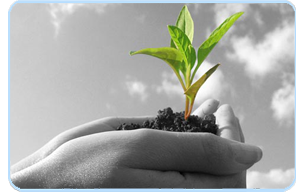 DASAGAVYA is a natural plant growth promoter for
yields, which is made by blending certain plant extricates alongside
panchagavya. The term gavya is given to cow’s items. Panchagavya contains dairy animals waste, cow pee, bovine's
milk, curd and ghee, suitably blended to give gainful growth impacts on plants
when sprayed on them.
DASAGAVYA is a natural plant growth promoter for
yields, which is made by blending certain plant extricates alongside
panchagavya. The term gavya is given to cow’s items. Panchagavya contains dairy animals waste, cow pee, bovine's
milk, curd and ghee, suitably blended to give gainful growth impacts on plants
when sprayed on them.
Panchagavya is the real element of Dasagavya. It is made at
first by completely blending 7 kg of fresh cow dung with 1 kg of ghee in a
perfect plastic drum. After two days, 10 liters of cow pee and 10 liters of
water are included and the blend is kept for 15 days.
After 15 days, three liters of cow’s milk, two liters of
curd, three liters of delicate coconut water, three kg of Jaggary and 12 well-ripened
Poovan (Tamil) banana organic products are added to the blend and mixed well,
as indicated by Prof. N. Selvaraj, Professor and Head, Horticultural Research
Station at Udhagamandalam, Tamil Nadu.
Fermenting time
The blend is permitted to ferment for around 25 days, which
empowers the growth and increase of certain useful microorganisms and
parasites.
Foliar concentrates of weeds, for example, Lantana camara,
Leucas aspera, Phytolacca octandra, Artemisia nilgirica and Datura metal are
then absorbed in cow pee in the proportion 1:1 (1 kg chopped leaves in 1 liter
cow pee) for ten days, as indicated.
These weeds are discovered affluently along the roadsides and
have been observed to be impervious to diseases and pests, because of the
vicinity of certain anti-feedant substances that avoid pests.
The plant concentrates are then separated, blended well and
added to the panchagavya solution in the proportion of 1:5.
The blend accordingly got is called Dasagavya and can
possibly promote growth, support Immunity in the plant framework to
repulse pests and control diseases. The blend is mixed well regular for around 20 days to
guarantee intensive blending of panchagavya and the plant removes.
Improves quality
Additionally, it has been found to improve the organic productivity
of harvest plants and the quality of vegetables and foods," said Prof.
Selvaraj.
The Dasagavya solution must be separated before splashing to
avoid from stopping up of sprayer spouts. Around 3% Dasagavya solution is
suggested as a foliar spray for splashing over the plants clarified Prof.
Selvaraj. Soaking of seeds or dunking the roots of seedlings in 3% Dasagavya solution
for around 30 minutes before planting is found to improve seed germination and
root improvement in plants.
Spraying plan
Dasagavya might be splashed once consistently for all
vegetable and plantation crops.
Splashing Dasagavya is successful in controlling infections,
for example, leaf spot, curse, fine buildup, rust of vegetables and cut flower
products and tea blister blight.
Dasagavya also controls pests, for example, aphids, thrips,
white flies, bugs furthermore foliar caterpillars. Plants splashed with Dasagavya
constantly created bigger sized leaves and created denser overhang with profuse
rooting systems, which empowered higher admission of supplements and water. The
taste and shelf life of realistic usability of the treated vegetables and fruits
were additionally observed to be improved, said Prof. Selvaraj.
Cost of Production
The expense of production per liter of Dasagavya works out to
Rs.40, which is less expensive contrasted and plant protection products and
can be sold for up to Rs.90 per liter.
Little scale agriculturists and ladies self improvement
gatherings can begin manufacturing Dasagavya as a business wander, as indicated
by Prof. Selvaraj.
